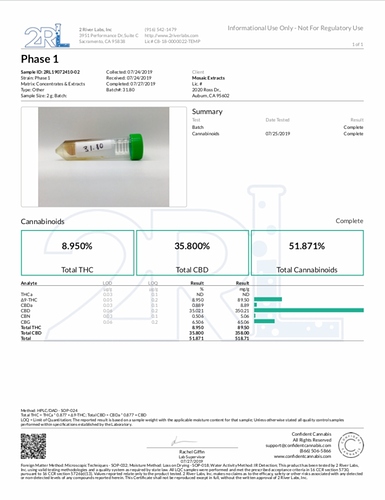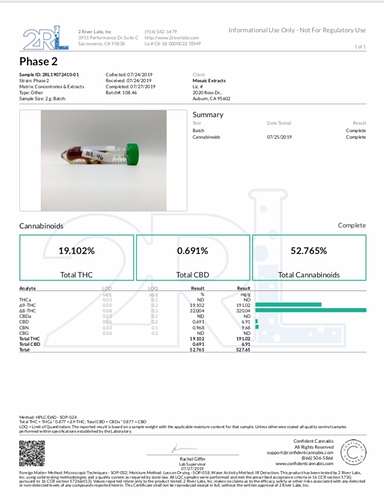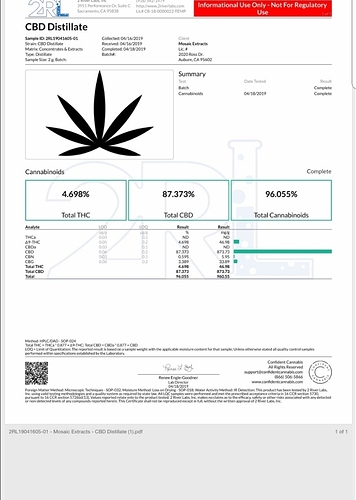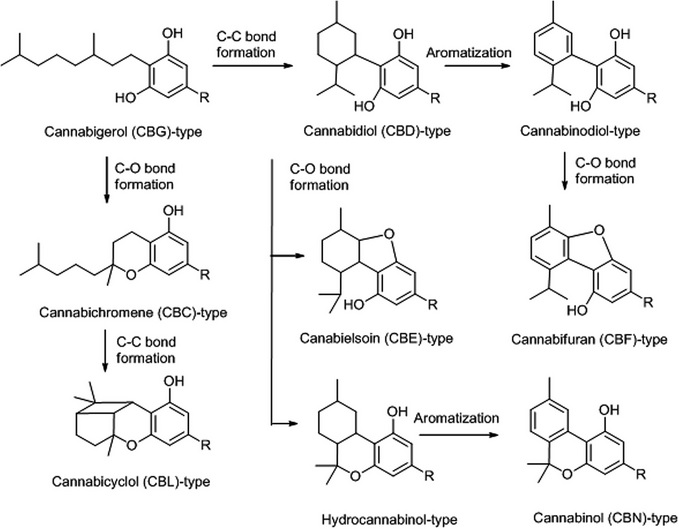While attempting to convert CBD and Delta 9 in hemp mother’s liquor to CBN I instead achieved a high efficiency conversion and isomerization to Delta 8 and Delta 9. I have attached the COAs from before and after and SOPs for everyone’s use. The parameters can be tweaked slightly to achieve complete conversion to Delta 9, isomerization to Delta 8 or degradation to CBN. Happy R&D gang!
Here is the summary of the conversion test we performed including equipment, procedures, and yields.
Materials used:
-
SH-2 Stir Plate -
20mm flat magnetic stir bar -
Mercury Thermometer -
Infrared Heat Thermometer -
Stainless Steel Lab Spatula -
Gram Scale -
100ml Pyrex Beaker -
250ml Flat Bottom 24/40 Round Flask -
250ml 2-neck 24/40 Round Bottom Flask -
Claisen adapter 24/40
-
3-way Distillation adapter,75° 24/40
-
2 x 24/40 Ground Glass Stoppers -
13.300MM Liebig condenser
-
Vacuum take-off adapter 24/40
-
2 x Laboratory Stands
-
WVP-02 Water Aspirator Vacuum Pump
-
Circulating coolant bath -20C
-
Insulated Coolant hose
-
Vacuum hose
-
2 Liter Vacuum Filtration Apparatus
-
Qualitative filters
-
C-Bleach
Procedures:
-
110 ml of oil/pentane solution is taken from the mother liquor. -
Oil/pentane solution is added to the vacuum distillation apparatus and solvent is recovered yielding 51.52g of purged oil. -
14.61 grams of purged oil is added to a flat bottom 250ml round bottom flask and heated to 100C with magnetic stirring applied. -
4.61 grams of C-Bleach is added to the stirring hot oil. -
The material is brought up to 140C for 40min and 150C for 5 min with vigorous stirring to ensure aeration of the material. -
The hot plate is then turned off and the material is stirred until cool. -
The oil/c-bleach mixture is recovered with 99% isopropyl alcohol and filtered twice though double layered qualitative filters to remove spent catalyst. -
The isopropyl alcohol is then vacuum distilled out of the reacted oil mixture to produce a final yield of 10.0 grams (68% yield by wt.).



